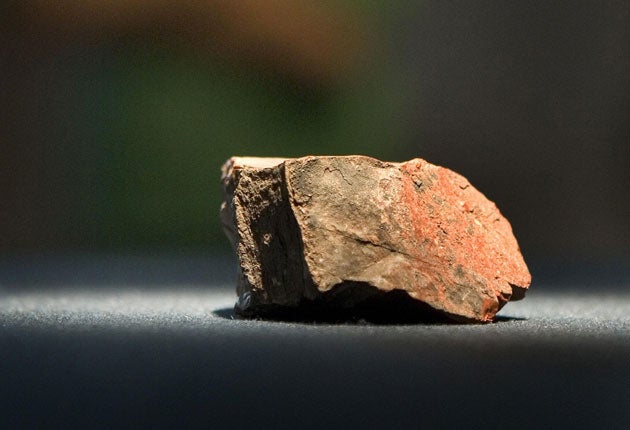A $1.7m offer that was out of this world
Woman tried to sell a piece of the moon - but her buyer was an undercover Nasa agent

Your support helps us to tell the story
From reproductive rights to climate change to Big Tech, The Independent is on the ground when the story is developing. Whether it's investigating the financials of Elon Musk's pro-Trump PAC or producing our latest documentary, 'The A Word', which shines a light on the American women fighting for reproductive rights, we know how important it is to parse out the facts from the messaging.
At such a critical moment in US history, we need reporters on the ground. Your donation allows us to keep sending journalists to speak to both sides of the story.
The Independent is trusted by Americans across the entire political spectrum. And unlike many other quality news outlets, we choose not to lock Americans out of our reporting and analysis with paywalls. We believe quality journalism should be available to everyone, paid for by those who can afford it.
Your support makes all the difference.She promised him the moon, for a sky-high price – but he wasn't buying. And there was a reason for that, for the would-be buyer to whom she was offering the rare piece of moon rock was not a collector, but an undercover Nasa agent. The result? No sale, and the seller detained.
Nasa investigators and California's Riverside County sheriff's deputies detained the woman on Thursday after she met an undercover Nasa investigator at a restaurant in Lake Elsinore, 70 miles southeast of Los Angeles. The authorities swooped after the two agreed on a price of $1.7m (£1m) and the woman, whose name has not been released, pulled out the rock.
It is illegal to sell the rocks, which are considered to be national treasures in the US and were given as gifts to each state and 136 countries by the then president Richard Nixon after the American moon missions brought them back. They can sell for millions of dollars on the black market.
About 2,200 samples of lunar rocks, core samples, pebbles, sand and dust – weighing about 840lbs (380kg) – were brought back by Nasa's Apollo missions between 1969 and 1972. A recent count showed that 10 states and more than 90 countries could not account for their shares of the grey rocks.
A former Nasa official said most purported moon rocks offered for sale on the internet are bogus, though authentic moon rocks can be purchased legally if they came to Earth naturally as a meteorite.
Seventy per cent of Nasa's lunar rock and soil samples are housed at Johnson Space Center, and another 14 per cent are at a site in New Mexico. The rest are either on loan for study or display – or are unaccounted for. In 2009, the Rijksmuseum in the Netherlands confirmed that one of its rocks was a fake and not an artifact collected by the Apollo 11 crew. And a rock presented to Honduras was recovered in a 1998 Nasa sting after a Miami collector offered $5m for it.
The investigation into this latest attempt at selling moon rocks was conducted over several months. Nasa now plans tests to determine whether the rock came from the moon as the woman claimed. "We don't know if it's lunar material," said Gail Robinson, the deputy inspector general at the space agency. Joseph Gutheinz, a University of Arizona instructor and former Nasa investigator who has spent years tracking down missing moon rocks, said a lunar curator at the Johnson Space Center would carry out the testing. Among the substances the rock could contain is armalcolite, a mineral first discovered on the moon and named for Neil Armstrong, Buzz Aldrin and Michael Collins, the Apollo 11 crew.
The seller has not been arrested or charged. It was not known how she obtained the rock or came to Nasa's attention. Mr Gutheinz said she could face theft charges if the rock is genuine, or fraud charges if it is not.
Join our commenting forum
Join thought-provoking conversations, follow other Independent readers and see their replies
Comments